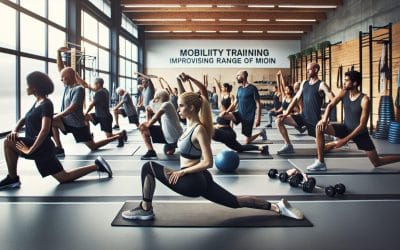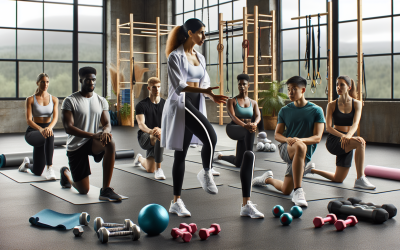Get expert mobility training tips for busy professionals at Eastside Ideal Health. Improve your flexibility and movement for optimal health.
Move Freely, Perform Better
Mobility Training in Redmond, WA
Move Better, Feel Better, and Perform Your Best
Locations in Redmond & Issaquah
Helping You Move with More Ease
Mobility isn’t just flexibility—it’s strength and control throughout your full range of motion. Whether you’re recovering from injury, aiming to improve posture, or preparing for activities as you age, our personalized mobility training programs at Eastside Ideal Health help you move freely, safely, and confidently every day.
What Is Mobility Training?
Mobility training improves joint health, muscle coordination, and movement efficiency. It goes beyond static stretching by incorporating strength, dynamic control, and movement-focused exercises to enhance your functional range of motion.
Who Can Benefit?
- Office workers with stiff hips or shoulders
- Athletes seeking better performance and injury prevention
- People recovering from injury or surgery
- Adults experiencing age-related stiffness or balance loss
- Anyone wanting improved posture, joint control, and functional movement
Our Mobility Training Process
Each program starts with a Functional Movement Assessment to identify motion restrictions and weaknesses. Your customized plan may include:
- Joint mobilizations to release restrictions
- Controlled Articular Rotations (CARs) for joint capsule health
- Strength-based mobility drills to build stability in end ranges
- Dynamic stretching and flow exercises to re-establish coordination
- Postural re-education to support daily movement patterns
Mobility vs. Flexibility
Flexibility is passive; mobility is active and controlled. Recent guidance from Cleveland Clinic emphasizes that movement through full ranges—including dynamic and resistance-based work—enhances flexibility and joint control simultaneously :contentReference[oaicite:1]{index=1}.
“Dynamic stretching better prepares your body for the different types of movement... improving muscle temperature and coordination.”
Daily Habits for Long-Term Mobility
We teach easy-to-follow habits—like at-desk drills, breathing exercises, and dynamic warmups—that help you sustain progress long after you leave the clinic.
Frequently Asked Questions
- Is mobility training like physical therapy?
- It shares similarities, but mobility training specifically targets joint control, movement efficiency, and injury prevention—often complementing physical rehabilitation.
- How soon will I notice improvements?
- Many patients experience better range of motion within a few sessions. Consistency helps build lasting results.
- Can this help with chronic joint pain?
- Absolutely. Improving joint control often reduces compensatory strain and improves overall movement patterns, which can alleviate chronic discomfort.
Move With Greater Freedom
If you’re frustrated by stiffness, imbalance, or limited movement, our mobility training programs can help you regain control, confidence, and functional strength. It's not about being flexible—it’s about being capable.
Book a Functional Mobility Assessment
Related Services:
“
Testimonials
Move Better, Feel Stronger
Mobility training helps improve joint flexibility, muscle control, and range of motion so you can move freely and confidently.
Prevent Injuries Before They Happen
By increasing body awareness and stability, mobility work reduces the risk of strain, imbalance, and overuse injuries.
Customized for Your Goals and Lifestyle
Whether you're recovering, training, or just staying active, we tailor mobility exercises to fit your daily needs and performance goals.
Learn More About Mobility Training
Mobility Training Resources
How to Improve Mobility with Dynamic Warm-Ups
Looking to enhance your mobility? Discover the benefits of dynamic warm-ups at Eastside Ideal Health. Improve mobility for a healthier life!
How to Use Mobility Training for Better Physical Health
Learn how to enhance your physical health using mobility training from Eastside Ideal Health. Unlock your body’s full potential today!
How to Use Mobility Training for Better Range of Motion
Improve your range of motion with mobility training at Eastside Ideal Health. Learn how to use this technique for better flexibility & movement.
The Benefits of Mobility Training for Martial Artists
Enhance martial arts skills with mobility training at Eastside Ideal Health. Discover the benefits to boost performance and prevent injuries.
How to Improve Joint Mobility with Simple Exercises
Learn effective exercises to enhance joint mobility at Eastside Ideal Health. Improve your flexibility and mobility with these simple workout routines. Tap now!
Contact Us For An Appointment
Get Relief
Clinic Hours
Monday-Friday: 730am - 6pm
Saturday: 9am - 12pm
Sunday: Closed






